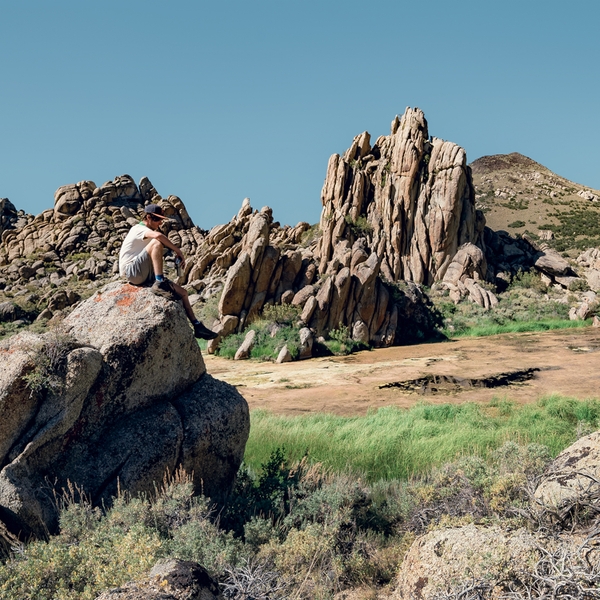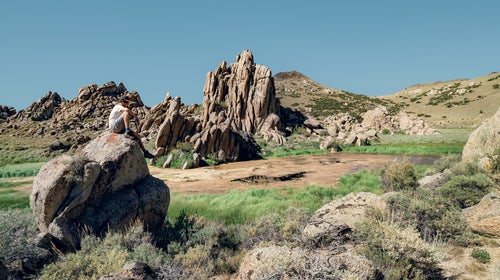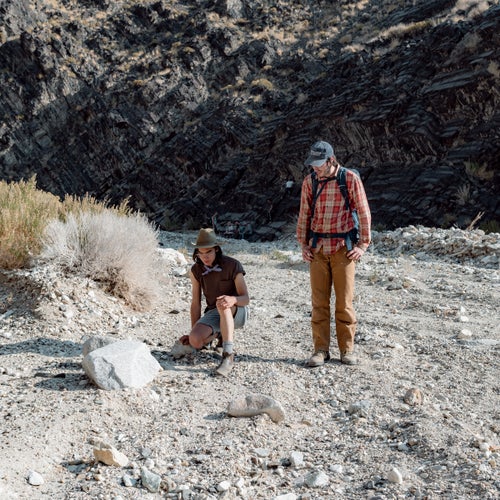This Elite Cowboy College Finally Let Women In. But Don’t Say It’s Changing.
For decades, Deep Springs College in California resisted the push to go coed. But even though women are now allowed to attend, it still holds on to the past.
New perk: Easily find new routes and hidden gems, upcoming running events, and more near you. Your weekly Local Running Newsletter has everything you need to lace up! Subscribe today.
At the end of an April week that promises the return of summer, Connie Jiang is trying to loosen a hydraulic filter from the underside of a giant red tractor while contemplating her future. Shaded from the high-noon sun and visible only from the waist down, Jiang jabs the blunt end of her wrench against the filter’s stubborn metal casing. A clang rings out against the tinny twang of the country classic “Something to Brag About,” which spills out of the whitewashed mechanic’s shop currently serving as Jiang’s classroom.
“Investigative journalism is always something I’ve really admired,” she says, giving the casing another smack. “If you have a government or some organization that’s, like, trying to hide something, for that to be brought out is important.” The casing finally gives and falls from the tangle of steel above into her oil-stained lap. “I’m kind of running into the same issue that I had in high school,” she says, half-heartedly wiping her hands on her Carhartts. “Everything is just so interesting.”
Jiang is a student at Deep Springs College, an experimental school in a remote California high-desert valley where “everything” does seem to mean almost everything. Since 1917, the two-year institution has taught students using a mix of cowboy grit and high intellectualism, a cocktail meant to prepare the world’s future leaders for a life of service to humanity. Twenty-six students at a time isolate themselves on campus, which doubles as a working cattle ranch. On top of a load of two or three seminars taught by a rotating slate of professors, students govern themselves and take on 20 hours of labor a week—either the hard, physical work required for life on a ranch or the paper-pushing needed to run a school. In addition to shoeing horses, branding cattle, irrigating crops, and milking cows, students choose the curriculum, hire faculty, and select the next class of Deep Springers. Drugs and alcohol aren’t allowed, and there’s spotty internet and little contact with the outside world. For the students who end up here, that’s the appeal.
“Isolation is great for self-reflection,” says Jiang, who came to Deep Springs after being disgusted by the cutthroat get-to-the-Ivy-League environment at her Philadelphia high school. “There were cheating rings and people went insane over this stuff. If you’re cramming Quizlet, that’s not learning, in my opinion, even if you get an A-plus.”
Despite its relative obscurity, Deep Springs is one of the most prestigious and selective institutions of higher education in the country. Students here have an average SAT score of 1500 and compete in a pool of 200 to 300 applicants for 13 spots a year. Graduates routinely transfer to schools like Cornell, Harvard, Yale, and Stanford to finish their bachelor’s degrees. Alumni have gone on to become prominent politicians, diplomats, journalists, mathematicians, and neurologists, and have been awarded MacArthur Genius Grants, Pulitzer Prizes, and Truman and Rhodes Scholarships.
The fact that Jiang is here, working under a tractor, stands out for one obvious reason: she’s a woman. Until 2018, Deep Springs admitted only “promising young men.” It took 100 years, decades of debate, and a five-year legal battle before women finally broke down the institution’s gates and let the modern world roll in. Now the question is, how much of this modern world will Deep Springs tolerate?














